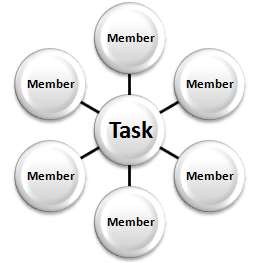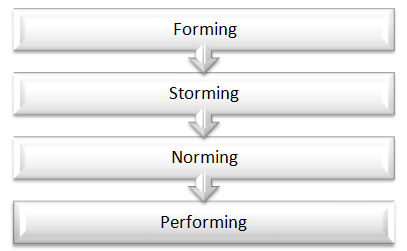Posts by John Dudovskiy

Multiple Stream Model developed by Kingdon (1984), on the basis of refining garbage can framework, represents an alternative approach to policy process and perceives it in terms of three different streams: a problem stream, policy stream to address the problem, and the political stream. According to this theoretical framework “the streams are usually independent, but windows of opportunity sometime open that allow for the streams to interact” (Crank, 2003, p.35). First, the problem stream relates to the source of the issue that necessitates introduction of a policy. As it has been partially discussed above, the problem stream for Tesco packaging policy is directly related to increasing status of sustainability issues in media, and consequently consumers in UK and elsewhere becoming more sensitive towards the issues related to sustainable development. Second, the policy stream involves evaluations and analysis of a wide range of policy ideas and proposals directed to the solution of the problem. In Tesco, the policy to be adopted as a response to the problem needed to balance the profitability of business operations with the creation of ‘green’ image fir the brand. In other words, Tesco strategic level management faced with the task of positioning the company as a ‘green’ in a cost effective manner. Third, the political stream includes various elements such as relevant government legislation, the influence of various non-government organisations and pressure groups and others. It is important to mention that while UK government encourages multinational business such as Tesco to behave in a socially responsible manner, there is a lack of legislation that specifies the extent of ‘greenness’ businesses need to adhere to (Horrigan, 2010). Therefore, Tesco possesses a great level of freedom in terms of government legislation when formulating its packaging policy. However, there are additional elements of political stream such as non-government organisations…

One of the popular definitions of policy reads as “a statement by government – at whatever level – of what it intends to do about a public problem” (Birkland, 2010, p.9). Accordingly, the issues of policy process are mainly discussed in the literature in relation to government policies. Tesco packaging policy is based on the following five key principles: being fit for purpose, using the lightest materials in terms of weight, using materials from the most sustainable sources, maximising the opportunities for recycling and recovery, and designed in a way that the lowest carbon impact can be achieved (Waste and packaging, 2012, online). According to Peters (2009) the Stages Model of Policy Process consists of the following stages: issue emergence, agenda setting, alternative selection, enactment, implementation and evaluation. All of these stages can be analysed in an individual manner in relation to the packaging policy of Tesco. Issue emergence of the policy process is an initial stage when specific problems are identified that need to be dealt with. Issues that require the introduction of relevant policies may arise fuelled by a wide range of reasons such as disasters, or any other dramatic changes. In terms of Tesco packaging policy this stage corresponds with increasing role of corporate social responsibility (CSR) aspect of the business in general, and the level of ‘greennes’ in particular. In other words, defined as responsibilities of business towards society apart from profit maximisation (Blowfield and Murray, 2008), CSR has emerged as a crucial aspect of the business to be dealt with by Tesco. The agenda setting stage of policy process corresponds with the issue growing to an extent that it requires immediate and due attention. It has been stated that “agenda setting occurs when the key players focus on an issue problem, which can be…
January 2, 2013
By John Dudovskiy
Category: Corporate Social Responsibility
Tags: Ethics, Retail, Sustainability

Constant organisational change in order to address increasing customer demands has become one of the basic realities of modern marketplace. However, it has been stated that “most efforts by executives, managers, and administrators to significantly change the organisations they lead do not work” (Burke, 2011, p.11). There is a wide range of reasons for this that primarily relate to the leadership style of organisational leaders, as well as, their abilities to embrace and practice the changes they promote as a role model. This article critically analyses the main sources of motivation for senior management interest in the concept of transformational leadership. The article starts with discussing the main characteristics of transformational leadership and provides explanations for growing senior management interest in the concept along a wide range of industries in the global marketplace. This is followed by in-depth discussions about relationships between transformational leadership style and change within organisations. A greater scope for the essay has been achieved through discussing a range of relevant change management concepts and theories that include Kurt Lewin’s change process, Burke-Litwin change model, and Kotter’s eight steps change tool. Main Characteristics of Transformational Leadership Increasing numbers of managers at all levels are expressing growing interest in the concept of transformational leadership and the principles of transformational leadership are being adopted by increasing numbers of executives with varying degree of success (Lindebaum and Cartwright, 2010). Transformational leadership has been defined as “style of leadership in which the leader identifies the needed change, creates a vision to guide the change through inspiration, and executes the change with the commitment of the members of the group” (Business Dictionary, 2012, online). In other words, transformational leadership places great emphasize on organisational change, and accepts organisational change to be an integral part of organisational strategy. Advantages of transformational leadership…

The emergence of contingency theories of leadership as a new major leadership paradigm is associated with the recognition in the late 1960s that no one best leadership style was available that was equally effective in all situations (Fitzimons et al., 2011). A clear distinction has to be made between leadership theories and models in order to avoid misunderstandings. As Lussier and Achua (2011) inform, theories of leadership is an explanation of a specific aspect of the practice of leadership, whereas leadership model involves an example of implementation of the theory in a particular situation. Contingency theories of leadership “attempt to explain the appropriate leadership style based on the leader, followers and situation” (Lussier and Achua, 2010, p.152) Contingency leadership model can be described as “a model used to determine of leadership style is task- or relationship-oriented and if the situation matches the style” (Lussier, 2011, p.338). Three variables of contingency theories of leadership are leader, followers, and situation, and the basic idea behind contingency theories of leadership is that the level of effectiveness of a leader depends on how well the style of the leader fits the organisational context. Contingency theories of leadership focus on specific situational factors such as people, task, strategies, etc. Fiedler’s contingency theory, path-goal theory and situational leadership theories belong to contingency theories of leadership. The case for the relevance of contingency theories of leadership to today’s business world can be effectively illustrated by referring to the story of Indra K. Nooyi, Chairman and Chief Executive Officer of PepsiCo – one of the leading global food and beverage company. Growing up in Chennai, India, obtaining BS degree from Madras Christina College, and an Master’s Degree from Yale University, USA, being engaged in corporate strategy and marketing fields with Motorola, Asea Brown Bovri, and PepsiCo, Ms. Nooyi…

“Since the environment is dynamic, it is important for the organisation to change itself to make it compatible” (Pathak, 2011, p.23).Taking into account specific organisational characteristics associated with the business and on the basis of popular strategic change management models, an affective model for change be proposed specifically for Company that consists of the following seven stages: Searching for opportunities to gain competitive advantage Developing an initial change plan Obtaining stakeholder perspective on the issue Revising the change plan according to stakeholder perspective Preparing employees for the proposed change Implementing the change initiative Ensuring the continuity of the change Implementation of Model for Change Implementation of the proposed change model for Company involves adhering to the stages of the model specified above in a consequent manner. The main advantage of the model relates to encouraging a proactive approach in relation to organisational change within Boots. In other words, instead of introducing changes as a response to changing external environment in a reactive manner, the model encourages Company management to be searching for opportunities to gain competitive advantage in a proactive manner. Importantly, the above model for Company has been proposed only as a general framework and its implementation in practice may be associated with minor alternations depending unique aspects of each individual change proposal. References Pathak, H. (2011) “Organisational Change” Pearson Education India
By John Dudovskiy
Category: Change

Organisational stakeholders of business need to be involved in planning strategic changes. The extent of involvement of each type of stakeholder in the planning of the change depends on a range of factors such as their influence, their importance, and the degree to which changes are going to affect them. The extent of involvement of each type of stakeholder in the planning of the change is best explained by referring to the following graph. Figure 1 Stages of stakeholder involvement in change processes Source: Change Management Toolbook (2010) On the basis of graph above, employees and managers as the main internal stakeholders at Company need to be involved in change planning process to the extent of ‘co-creating’. The degree of involvement of company’s main external stakeholders – customers, on the other hand has to be limited to ‘testing’, whereas the company’s suppliers and shareholders need to be involved in the planning of change to the extent of ‘selling’ Additionally, “decision – makers may commission market surveys or mandate market research institutes so as to early perceive emergent stakeholder groups and their claims” (Zimmermann, 2011, p.225) in order to reflect their viewpoints regarding the change initiatives. It is important to note that the system to involve stakeholders in the planning for change presented above is only a general framework and the extent of involvement of stakeholders may differ in each individual circumstance depending on the nature of the proposed change. Change Management Strategy with Stakeholders Business’s change management strategy with stakeholders primarily depends on the level of power of each stakeholder category, as well as, the level of their interest on the change proposal. As a general rule, Company is suggested to deal with its stakeholders on the basis of the following figure as it has been suggested…

There are three different types of teams: problem-solving teams, self-directed work teams, and functional teams. Problem-solving teams involve sharing ideas and suggestions amongst members to a great extend. This type of team is used “temporarily in order to bring knowledgeable employees together to tackle a specific problem” (Pride et al., 2011, p.296). Self-directed work teams, on the other hand, represent teams that have been assigned tasks coupled with authority and skills to manage themselves. Members belonging to such type of teams found to be highly motivated and satisfied due to increased level of task variety and control over the job. An alternative variation of team is a functional team that is formed from employees belonging more or less to the same hierarchal level but, employed in different departments of the company. The main advantage associated with this specific team format relates to the fact that employees from various organisational departments offer varying perspectives on the issue, so that problems can be resolved with an increased level of efficiency (Steers and Nardon, 2008). References Pride, W.M, Hughes, R.J & Kapoor, J.R. (2011) “Business”, 11th edition, Cengage Learning Steers, R.M. & Nardon, L. (2008). “Managing in the Global Economy”, ME Sharpe

Specific features need to be present within teams in order for the team to be able to achieve its objectives efficiently. ‘Integrated Model for Team Effectiveness’ framework proposed by Reis and Geller (2010) can be used in order to explore this issue with sufficient level of depth. The framework specifies eight most important features of effective teams in the following manner: Purpose. Effective teams understand, share and value team’s objectives Strategy. The ways of achieving team objectives are clear to each team member Team roles. The existence of all needed roles such as shaper, specialist, critic has been ensured within the team Work processes. Efficient operating procedures are put in place that effectively contribute to the achievement of team objectives Team processes. There is a great level of respect, understanding and trust amongst team members. Engagement. High level of team engagement is achieved through effective utilisation of motivational tools Feedback and metrics. Objective and timely information is communicated to team members regarding the team performance and their individual performances Stakeholders. Appropriate level of interaction between the team and key stakeholders is maintained. It is important to note that all team members do not need to possess the same set of personal traits, skills and competencies, rather variety within the team is welcomed to an extent that it produces a balanced outcome that would allow the achievement of team objectives efficiently. Nevertheless, there is a common set of skills and competencies to be possessed by each member of team regardless their role and function within the team. First of all, each team member needs to possess effective communication skills in order to be able to formulate their viewpoint in an appropriate manner, an adequate level of cross-cultural knowledge is also important for team members taking into account increasing forces of…

Different roles needed for the team can be explained through Belbin’s Team Roles Theory. Specifically Belbin (1993) divides roles within teams into the following nine categories: Plant is the one who is creative and can propose effective solutions to complex issues. However, this role may be associated with certain weaknesses such as such us ignoring incidents and remaining excessively preoccupied to focus on other important issues Resource investigators are the type of individuals who are extraverts with good communication skills, and thus it is easy for them to make contacts. However, these individuals need to be monitored due to their over-optimism, and tendency to lose interest and enthusiasm. Co-ordinators are confident and mature decision-makers who are good at delegation. Specific measures need to be provisioned so that co-ordinators are not perceived as manipulators. Shapers in teams are dynamic individuals who perform well under pressure. However, shapers need to be dealt with care due to their proneness to provocation and they also may offend the feelings of other people. Monitor/evaluators are valuable team members due to their strategic and detailed approach to issues. But this category of team members may not may great leaders because of the lack of drive and difficulties associated with inspiring others. Team-workers as co-operative and responsive employees make invaluable contribution to the achievement of team objectives. However, it has to be remembered that leaving team-workers alone in crisis or near crisis situations may result in negative consequences. Implementers are the ones who are highly efficient due to their discipline and reliability. Nevertheless, their occasional inflexibility and lack of speed in embracing new opportunities have to be compensated for by other team members Completer/finisher team members are needed to provide ‘final touch’ to projects and ensure their timely delivery. However, these types of employees have a set…

It has to be understood that successful performance of a team can be achieved only after a specific period of time required for the group members to get to know and accustomed to each-others personalities working styles etc. Tuckman Theory for developing teams offers an effective explanation of this matter in the following manner: Different stages of Tuckman Theory for developing teams During the forming stage team members are introduced to each-other and team aims and objectives are communicated to them. This is followed by the storming stage that can be described as “the time when team members begin to realise that the task is different or more difficult than they have imagined” (Hass, 2011, p.62), and interpersonal conflicts may arise in the team, therefore this stage can be specified as the most challenging part of the team formation process. The norming stage relates to time when formal and informal roles and responsibilities have been set and agreed within the team and the actual team performing process has commenced. Performing stage, as the most desirable stage from management viewpoint involves team members feeling positive and excited about the teamwork. Some teams also face adjourning stage, implying the end of the teamwork.
